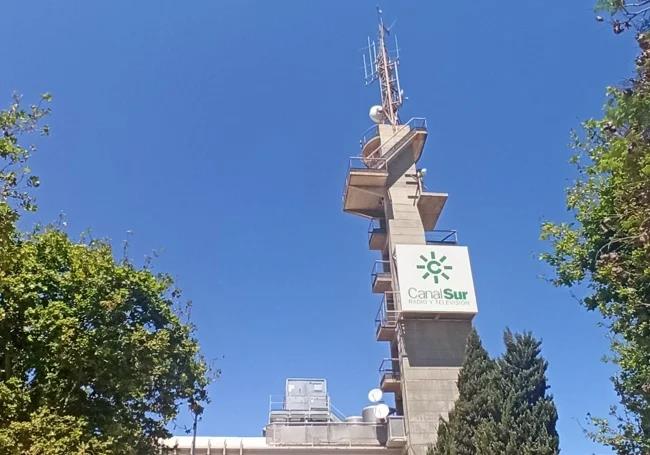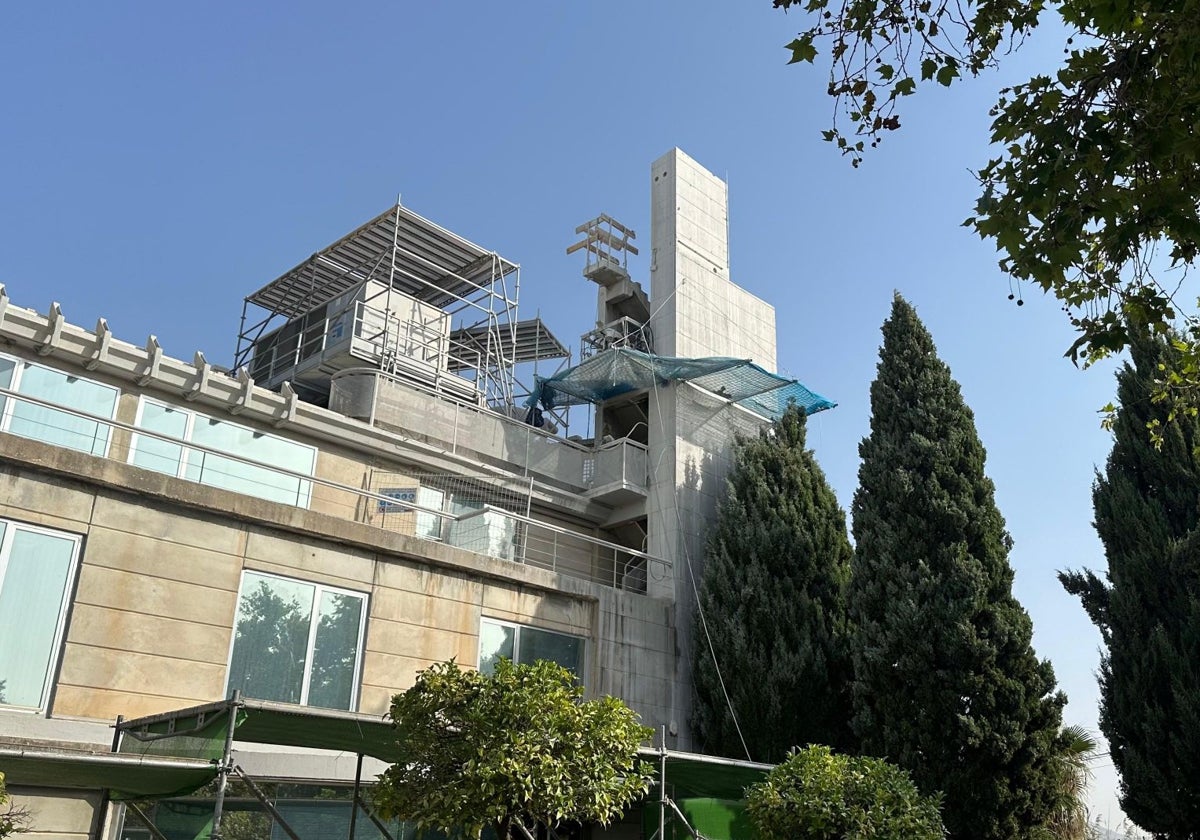Canal Sur tower is no longer an obstacle to Malaga Airport's second runway
The reduction in height of the towering structure will improve the operational air traffic capacity of the gateway to the Costa del Sol
The old Canal Sur telecommunications tower is no longer a hindrance to aircraft using Malaga Airport's second runway. The progress made in the work to dismantle the upper part of this structure, which began last month, is already very noticeable, with a substantial reduction in the tower's height. The tower has not been used for a considerable period of time. The second runway was officially opened on 26 June 2012 and this change, which was expected 13 years ago, will clear the way in the coming months to improve the operational capacity of the gateway to the Costa del Sol for landings and take-offs.

The second runway, identified for air navigation purposes as 12/30, has a length of 2,750 metres for landings and 3,090 metres for take-offs. Since its opening it has been operating at half throttle as some of the operations could not be carried out. This boils down to two factors: the environmental impact on the mouth of the Guadalhorce river and the height of the tower belonging to Canal Sur, Andalucía's radio and television station.
The first issue has not been resolved, but the second one is pretty much fixed, thanks to the removal of some ten metres off the towering structure. Prior to this partial dismantling, the tower stood at almost 42.4 metres high. For those who can recall the old look of the building, the entire section of the tower that protruded above the large sign advertising the Malaga headquarters of this media outlet has been removed. In any case, the tower no longer had any antennas or other gear necessary for its active use, according to Montse Naharro, regional director of Radio Televisión de Andalucía (RTVA) in Malaga province.
The new airspace for flights over the second runway will not increase operations for environmental reasons, but it will give more guarantees to the routes already in place.
The work is proving to be complex as the structure is being dismantled piece by piece, with the bulk of the work being carried out at night to ensure noise does not affect emissions or interfere with the movement of airport workers. Naharro states that this phase is expected to be completed within two weeks, as the work is running to schedule.
Subsequently, a metal platform will be placed overhead for maintenance purposes and the project will be completed in September. Although it was initially planned to reposition the Canal Sur logo on the part of the tower to be left standing, the plan now is to place it on a large pole that will be installed in the car park of these studios.
Changes at the airport
The renovation has been carried out under a financing agreement with state airport operator Aena and work is already progressing well , with an initial two-month deadline and completion scheduled for July. At that time, the airport and in particular the control tower, will pick up the baton, as the new operations being opened up for the second runway will have to be validated. When completed, this will allow planes to land using runway 30 and take off using runway 12, according to an Enaire official from Spain's air traffic control authority.
The airport is currently operating with "one and a half runways", because the second runway cannot be flown over. Therefore, once the obstacles are removed and everything is approved, "all four runways" will be available. Although there are physically only two runways, in air navigation the airfield is considered based on direction, so the number of runway headings will increase from three to four.
In any case, this second runway will only be used very occasionally "for some contingency on the main runway." Therefore, it will not be used intensively for ecological reasons in order to minimise its environmental impact on mouth of the Guadalhorce river, which is a protected bird habitat. However, it can be activated for emergencies, in the event of work happening on the main runway (13/31) or in the event of an aircraft blocking that same runway due to a problem. "In these cases it will give us more versatility, safety and resilience" should there be a temporary closure of runway 13/31. Only then would 12/30 (the second runway) be used in both directions.
Nor will the opening be imminent. In the coming months it will be necessary to adjust procedures for the new runway and flights will need to be carried out with a calibration aircraft to fine-tune the calculations. Finally, it will have to go through the complex air safety procedures. Therefore, it will still take several more months before 100% use is permitted. In conclusion, as far as day-to-day airport operations are concerned, in reality this progress will not directly mean more flights or passengers arriving by plane from this airport on the Costa del Sol, but it will mean more guarantees for the airlines that operate them.
The main runway (13/31) operates in both directions, depending on the wind direction at any given time. It should be noted that, as a rule, aircraft land and take off against the wind: with an easterly (levante) wind, it is used to land from the land direction. With a landward (terral) wind, it is used to land from the bay. Meanwhile, for take-offs, with levante the plane heads out towards the sea. Then, with terral, the take-off is towards the land, as explained by Malaga's air traffic controllers. With the second runway (12/30) having always operated at half-capacity, it has not been possible to fly over the part of the runway where the Canal Sur tower was located.

